Us Ecommerce Market Size
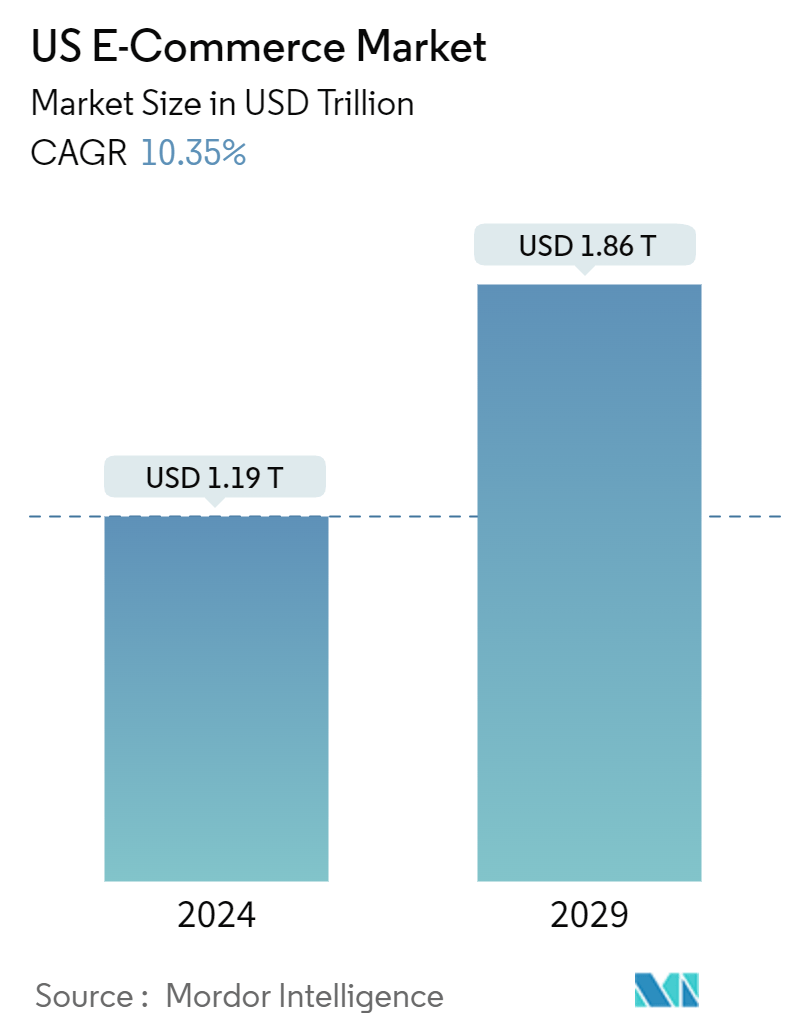
| Study Period | 2019 - 2029 |
| Base Year For Estimation | 2023 |
| Market Size (2024) | USD 1.19 Trillion |
| Market Size (2029) | USD 1.86 Trillion |
| CAGR (2024 - 2029) | 10.35 % |
| Market Concentration | Medium |
Major Players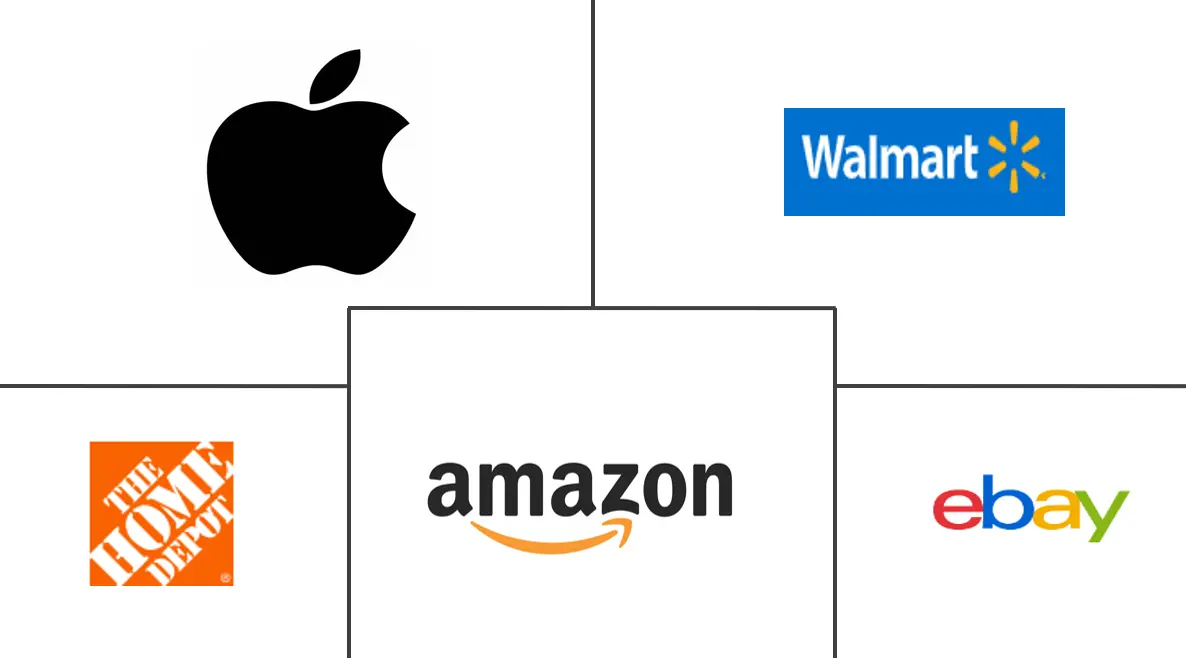
*Disclaimer: Major Players sorted in no particular order |
Us Ecommerce Market Analysis
The US E-Commerce Market size is estimated at USD 1.19 trillion in 2024, and is expected to reach USD 1.86 trillion by 2029, growing at a CAGR of 10.35% during the forecast period (2024-2029).
- The e-commerce market in the United States is highly developed owing to the presence of major market vendors and a growing number of online shoppers. In addition, Online shopping in the United States is gaining popularity owing to the growth in internet users shopping online, rising online shopping for beauty and fashion products, and the increase in mobile adoption and social media penetration.
- The country's e-commerce market is evolving rapidly, and one of the notable trends is the increasing use of digital payments for online shopping. This can be attributed to technological advancements, changing consumer preferences, and the overall growth of the e-commerce sector.
- Advanced technologies like artificial intelligence (AI) and machine learning (ML) are reshaping the US e-commerce market. For example, Brooks Brothers, the nation's oldest apparel brand, entered into a strategic collaboration with Metrical in November 2023. This partnership aims to bolster e-commerce sales by leveraging AI and ML to predict online shopper behavior. Metrical's AI/ML algorithms prioritize consumer privacy, operating anonymously without Personally Identifiable Information (PII).
- In the coming years, the growing presence of well-known and popular e-commerce companies in the country, coupled with technological innovation in the payment gateway landscape, will positively impact the e-commerce market by giving consumers a wide variety of products to purchase online and have them delivered to their address. The presence of various BNPL offering vendors in the country is expected to positively impact the growth of the e-commerce market, as these vendors offer consumers versatile payment methods such as Buy Now Pay Later (BNPL) for online shopping.
- According to the financial guidance platform NerdWallet, the popularity of Buy Now, Pay Later (BNPL) plans surged significantly. As per NerdWallet's '2024 State of Consumer Credit Report', BNPL plans rank as the second most utilized credit payment option among US consumers, with an adoption rate of nearly 25%. Such factors are expected to fuel market growth over the forecast period.
Us Ecommerce Market Trends
The B2C Segment is Expected to Hold a Significant Market Share
- The B2C segment is expected to hold a significant market share owing to the presence of major vendors offering products through this model. Notably, the fashion and apparel category is witnessing significant traction in the country, primarily from young consumers.
- The economy of the United States has become more diversified, consumers' lifestyles have improved, and the per capita income has increased. Global luxury companies, including Prada, Zara, and Louis Vuitton, have a significant presence in the country. A shift toward e-commerce is one of the most important shifts in the luxury market, as many consumers feel more at ease making purchases online. Further, high-end merchants provide omnichannel experiences, which combine online and offline channels and allow customers to transition between them without any hassle.
- The growing popularity of shopping online for clothing and fashion accessories among young consumers is expected to positively drive the sales of the fashion and apparel category over the forecast period. Moreover, various payment methods available on online B2C marketplaces in the country support the segment's growth by providing consumers with a wide variety of choices to pay for their online purchases.
- According to the survey by global payment firm Worldpay, e-wallets and digital/mobile wallets were the most popular payment method for online shopping in the United States, with a 37% market share in 2023. Further, E e-wallets and digital/mobile wallets are expected to hold a 52% market share by 2027. Credit and debit cards are other popular e-commerce payment methods in the United States.
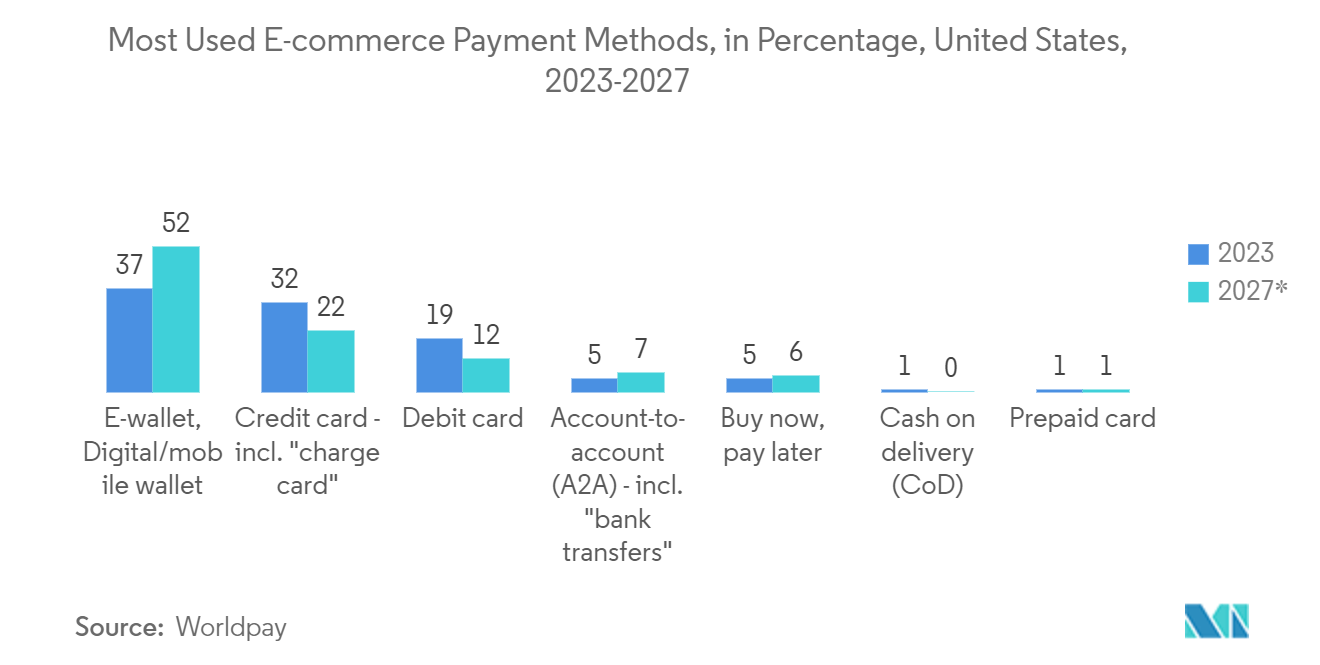
High Internet Penetration and Smartphone Usage is Expected to Drive the Market
- The country has significantly high Internet and smartphone penetration. The rising popularity of mobile shopping in the US e-commerce market is a growing trend. Smartphones are the most popular platforms for online purchases in the United States.
- According to the data from GSMA Intelligence, there were 396.0 million cellular mobile connections in the United States at the start of 2024. Accordingly, mobile connection penetration was 116.2% of the total population in January 2024. Such high smartphone penetration is expected to positively impact the growth of the US e-commerce market over the forecast period.
- Mobile commerce has the potential to change consumers’ shopping habits and establish itself as a significant commerce channel, and with high smartphone and Internet penetration in the country, the e-commerce market is witnessing significant growth. Consumers rely on digital devices such as smartphones more than ever before, and the growth in mobile commerce predicts that smartphones will become the preferred channel for online shopping in the country.
- Additionally, with the high Internet and smartphone penetration, consumer shopping behavior is rapidly changing, forcing e-commerce market vendors to offer innovative shopping apps and various digital payment transaction modes. Such factors are expected to drive the market’s growth as consumers continue to opt for the ease and convenience of online shopping.
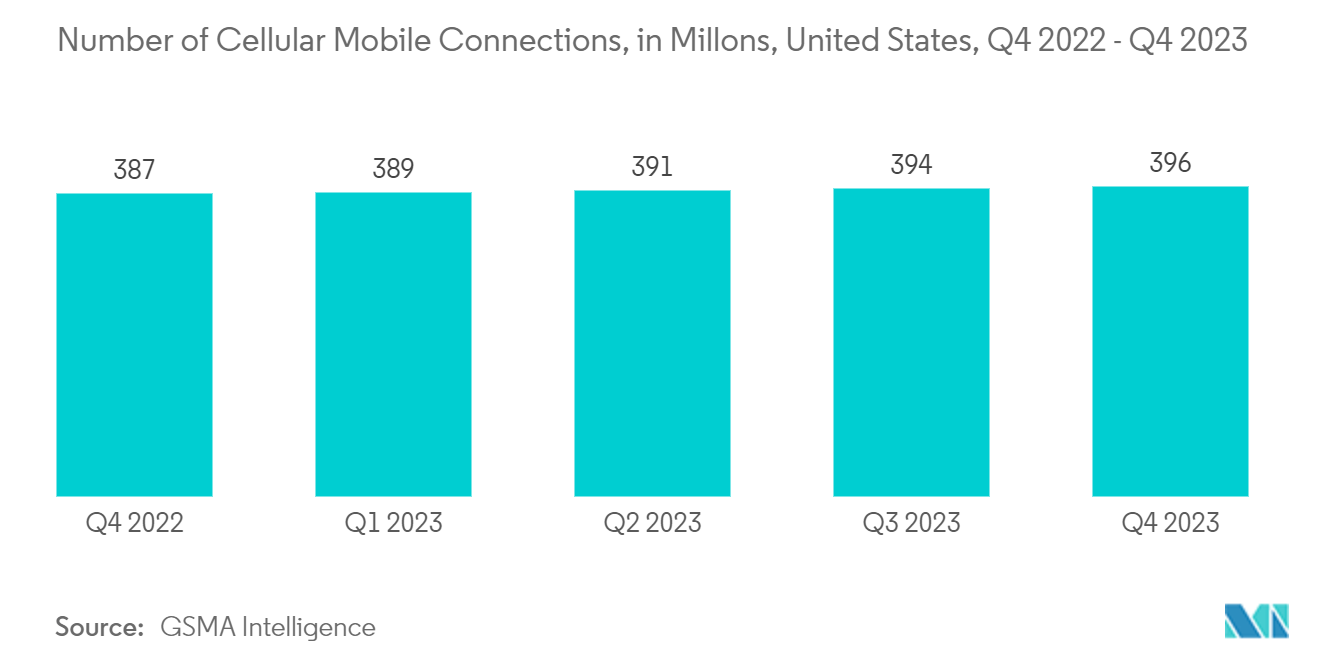
Us Ecommerce Market Leaders
The e-commerce market in the United States is semi-consolidated. Amazon, Walmart, and Best Buy are the top online retailers in the market. Amazon is the dominant player. Apple Inc. and Home Depot are some other major players in the market. These players are indulging in partnerships, acquisitions, and mergers to increase their market shares.
Us Ecommerce Market Leaders
-
Amazon.com, Inc.,
-
Walmart
-
Apple Inc.
-
eBay Inc.
-
Home Depot
*Disclaimer: Major Players sorted in no particular order
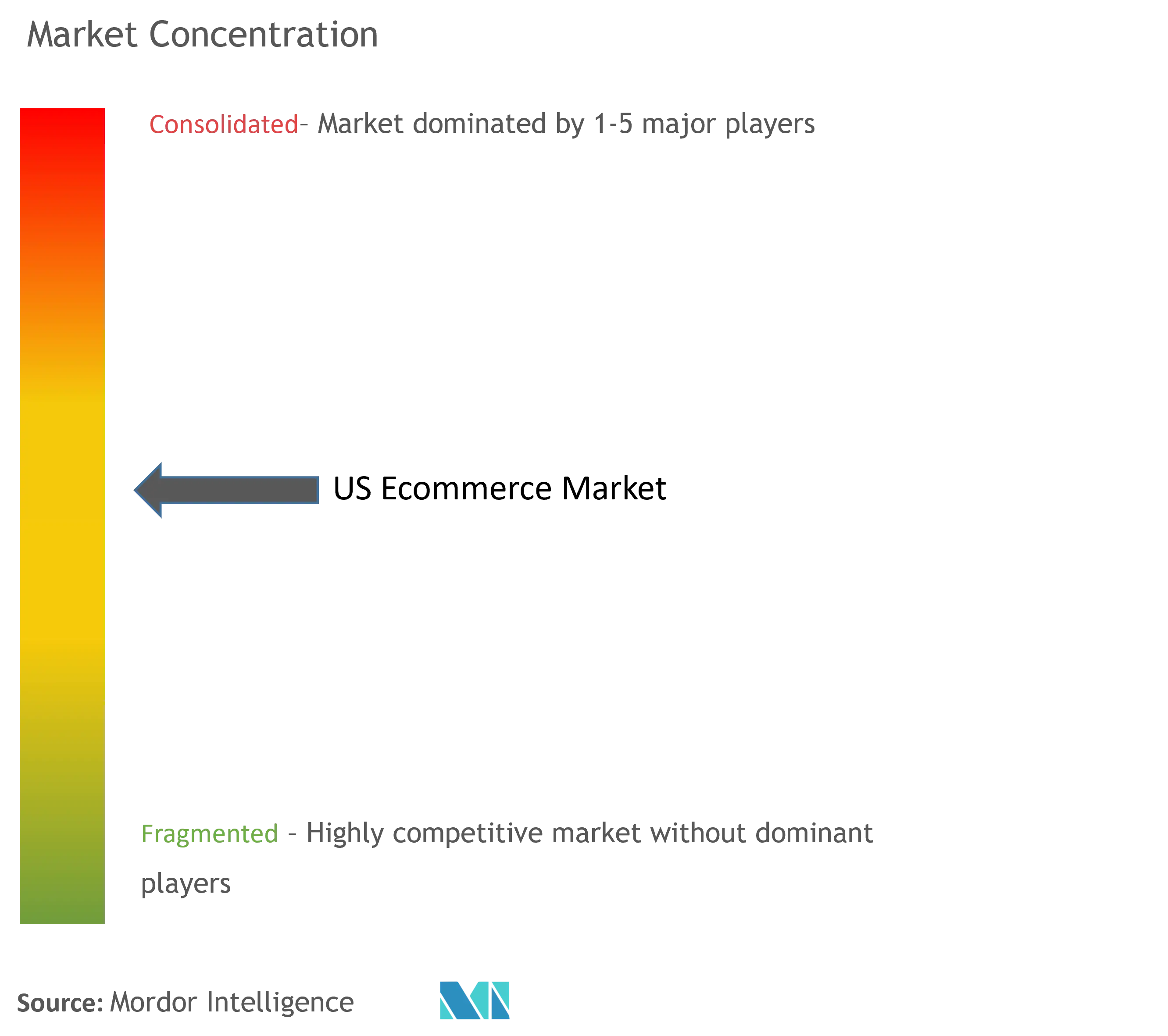
Us Ecommerce Market News
- April 2024: Nordstrom's shopping experience unveiled plans to introduce a new digital marketplace on Nordstrom.com. This marketplace aims to offer customers an enhanced selection of products, brands, and sizes, catering to their preferences. By broadening its product range, the company aims to provide customers with more reasons to choose Nordstrom for all their shopping needs while maintaining its hallmark service and quality.
- April 2024: TikTok announced that by the end of 2023, over 500,000 merchants were actively selling to US users through its e-commerce platform. This figure marked a significant surge, more than double from just three months prior, showcasing TikTok's intense focus on bolstering its e-commerce initiatives.
- February 2024: Qoo10 Pte., an e-commerce platform centered in Southeast Asia, finalized a USD 173 million acquisition of Wish, a prominent US online marketplace, from ContextLogic Inc., a company listed on Nasdaq. This strategic move is expected to allow Qoo10 to bolster its global logistics and operations and establish a strong presence in North America and Europe, marking a significant expansion beyond its traditional Asian markets.
US Ecommerce Market Report - Table of Contents
1. INTRODUCTION
- 1.1 Study Assumptions and Market Definitions
- 1.2 Scope of the Study
2. RESEARCH METHODOLOGY
3. EXECUTIVE SUMMARY
4. MARKET INSIGHTS
- 4.1 Market Overview
-
4.2 Industry Attractiveness-Porter's Five Forces Analysis
- 4.2.1 Bargaining Power of Suppliers
- 4.2.2 Bargaining Power of Buyers/Consumers
- 4.2.3 Threat of New Entrants
- 4.2.4 Threat of Substitute Products
- 4.2.5 Intensity of Competitive Rivalry
- 4.3 Key market trends and share of E-commerce of total Retail sector
- 4.4 Impact of Macroeconomic Factors on the E-commerce sales
5. MARKET DYNAMICS
-
5.1 Market Drivers
- 5.1.1 Growing Demand from Apparel and Footwear Industry
- 5.1.2 Rising Adoption of Advanced Technologies (IOT,ML)
- 5.1.3 High Penetration of Internet and Smartphone Usage
-
5.2 Market Challenges
- 5.2.1 High Cost of Internet
- 5.2.2 Data Privacy and Security Issues
- 5.3 Analysis of key demographic trends and patterns related to E-commerce industry in United States (Coverage to include Population, Internet Penetration, E-commerce Penetration, Age & Income etc.)
- 5.4 Analysis of the key modes of transaction in the E-commerce industry in United States (coverage to include prevalent modes of payment such as cash, card, bank transfer, wallets, etc.)
- 5.5 Analysis of cross-border E-commerce industry in United States (Current market value of cross-border & key trends)
- 5.6 Current positioning of country United States in the E-commerce industry in region North America
6. Market Segmentation
-
6.1 By B2C E-commerce
- 6.1.1 Market size (GMV) for the period of 2022-2029
- 6.1.2 Market Segmentation - by Application
- 6.1.2.1 Beauty & Personal Care
- 6.1.2.2 Consumer Electronics
- 6.1.2.3 Fashion & Apparel
- 6.1.2.4 Food & Beverage
- 6.1.2.5 Furniture & Home
- 6.1.2.6 Others (Toys, DIY, Media, etc.)
-
6.2 By B2B E-commerce
- 6.2.1 Market size for the period of 2022-2029
7. Competitive Landscape
-
7.1 Company Profiles
- 7.1.1 Amazon.com, Inc.
- 7.1.2 Walmart
- 7.1.3 eBay Inc
- 7.1.4 Apple Inc.
- 7.1.5 Home Depot
- 7.1.6 Shopify Inc.
- 7.1.7 Costco Wholesale Corporation
- 7.1.8 Target Corporaton
- 7.1.9 Best Buy
- 7.1.10 Wayfair
- 7.1.11 The Kroger Company
- *List Not Exhaustive
8. Investment Analysis
9. Future Outlook of the Market
** Subject To AvailablityUs Ecommerce Industry Segmentation
E-commerce is the buying and selling of goods and services over the Internet through online shopping. However, this term is often used to describe all the seller's efforts in selling products directly to consumers. It begins when potential customers learn about a product, buy it, use it, and ideally maintain lasting customer loyalty.
The US e-commerce market is segmented by B2C e-commerce (beauty and personal care, consumer electronics, fashion and apparel, food and beverages, furniture, and home) and B2B e-commerce. The report's scope includes market sizes and forecasts for the segments, with the B2C channel being further segmented by application. The market sizes and forecasts are provided in terms of value (USD) for all the above segments.
| By B2C E-commerce | Market size (GMV) for the period of 2022-2029 | |
| Market Segmentation - by Application | Beauty & Personal Care | |
| Consumer Electronics | ||
| Fashion & Apparel | ||
| Food & Beverage | ||
| Furniture & Home | ||
| Others (Toys, DIY, Media, etc.) | ||
| By B2B E-commerce | Market size for the period of 2022-2029 |
US Ecommerce Market Research FAQs
How big is the US E-Commerce Market?
The US E-Commerce Market size is expected to reach USD 1.19 trillion in 2024 and grow at a CAGR of 10.35% to reach USD 1.86 trillion by 2029.
What is the current US E-Commerce Market size?
In 2024, the US E-Commerce Market size is expected to reach USD 1.19 trillion.
Who are the key players in US E-Commerce Market?
Amazon.com, Inc.,, Walmart, Apple Inc., eBay Inc. and Home Depot are the major companies operating in the US E-Commerce Market.
What years does this US E-Commerce Market cover, and what was the market size in 2023?
In 2023, the US E-Commerce Market size was estimated at USD 1.07 trillion. The report covers the US E-Commerce Market historical market size for years: 2019, 2020, 2021, 2022 and 2023. The report also forecasts the US E-Commerce Market size for years: 2024, 2025, 2026, 2027, 2028 and 2029.
US e-commerce Industry Report
Statistics for the 2024 US e-commerce market share, size and revenue growth rate, created by Mordor Intelligence™ Industry Reports. US e-commerce analysis includes a market forecast outlook to 2029 and historical overview. Get a sample of this industry analysis as a free report PDF download.



